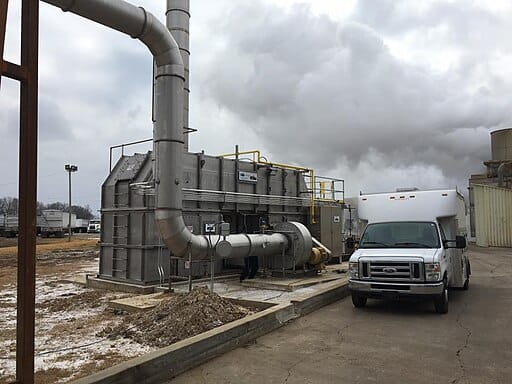Western North Carolina counties awaiting federal assistance decision
Considering the storms as one or two disasters would likely impact finding

These counties (and others) in western North Carolina around Asheville are not rich so assistance for disaster relief was important for these jurisdictions. Considering the disasters separately or the totality of all the damage would probably been the difference between a quick cleanup or a longer one.
At the time I wrote the article, I was living in the affected area and remember hearing about the television news crew that was killed in Polk County. That county received a lot of damage.
Bordering Polk is Henderson County, which has plenty of areas that are susceptible to flooding. Main roads or back roads, I’ve been turned around because of flooded roads. It can be quite frustrating and time consuming.
Oh, the following story made it into the organization’s top roundup of in-depth journalism for 2018. Go to No. 5, Storms and Floods.
By BEN LEDBETTER, August 15, 2018
After heavy rains in May that caused flash flooding, mudslides and other damage, multiple Western North Carolina counties are waiting to see whether they will receive federal assistance with their recovery.
They also hope that, if federal authorities do not grant assistance, they will receive help from the state.
Widespread rainfall of 10-20 inches in many locations produced North Carolina’s wettest May on record dating to 1940, according to the N.C. Climate Office and the state Division of Emergency Management.
The heaviest rains came at the end of the month when moisture from Subtropical Storm Alberto soaked an already saturated Western North Carolina.
Gov. Roy Cooper declared a state of emergency on May 30 for Western North Carolina after heavy rains caused mudslides in multiple communities, closed portions of Interstate 40 east of Asheville and triggered evacuations in McDowell County in Old Fort and near Lake Tahoma. Downed trees and mudslides forced the closure of roads in several counties.
Cooper’s request is still being considered by the Federal Emergency Management Administration.
That request has received further support from the state’s two U.S. senators, Thom Tillis and Richard Burr.
In a joint statement, the senators said they had requested that the damage caused by both flooding events be considered on the totality of the damage to ensure the state’s citizens receive the federal recovery assistance they need.
“In May, Western North Carolina was overwhelmed by back-to-back storms of flash floods and heavy rains,” Burr said. “For the residents who weathered them, these storms weren’t individual rainfall but a major weather event from which they are still recovering.”
“For that reason, I firmly believe that FEMA should consider both of these incidents and their aftermath as one as it assists affected communities.”
McDowell County woes
Among the most severely devastated counties was McDowell, including the county seat of Marion.
Marion City Manager Bob Boyette submitted a report to the Marion City Council last month, saying the regional damage from the rains in mid-May was $8 million, with another $9 million from the Alberto-related damage at the end of May.
The federal threshold for a statewide event to be covered is $14 million, so whether the rains are viewed as one or two incidents will be crucial.
Boyette advised council members that federal officials appear to favor treating the two weather events as one, since the rivers were already above normal levels and the ground was already saturated from the rain in the middle of May.
Boyette predicted that if the federal government does not make a declaration, the state would likely make one. That would cover 75 percent of funding but only for certain items like debris cleanup and road repair.
According to McDowell County Emergency Services Director Will Kehler, a total of 50 mudslides occurred in the county on both private and public property.
Kehler estimated damage to public property alone at more than $2.2 million across McDowell.
The city of Marion experienced $178,000 in damage, some of which has been cleaned up so far. Areas cleaned up include debris on and around aerial sewer crossings and water-intake and wastewater pump station access roads, Boyette told Carolina Public Press.
The city plans to start working with the McDowell Trails Association to identify potential volunteer or contract work that will not be compensated by reimbursement even if a future disaster declaration occurs, Boyette said.
The contract to clean up the Joseph McDowell Historical Greenway has been awarded and includes removal of silt, mud and debris, Boyette said.
It also includes replacing the granite-washed screenings at the 10 exercise stations that were washed away during the flooding, replacing 554 feet of fencing that was damaged and resurfacing 178 feet of an asphalt walking trail. Boyette said the city’s expectation is to have the greenway open by early September or sooner.
A structural engineer analyzed the bridges and piers along the greenway, which Boyette said would only need minor repairs. City staff will complete the repairs and minor stabilization needed along the river bank near the greenway, he said.
Devastation across region
Other Western North Carolina counties had damage that varied in severity.
One of the hardest-hit areas was Polk County, where there were three fatalities that included one woman who lived on U.S. 176 and two journalists from WYFF-TV in South Carolina.
“We have a lot of folks in the county that could benefit from federal assistance,” said Polk County Emergency Management Director Bobby Arledge.
In Henderson County, much of the damage was in the Bat Cave and Edneyville areas along U.S. Highways 64 and 74, as well as N.C. Highway 9.
Henderson County Fire Marshal Kevin Waldrup said state personnel were in the county to do an assessment, however the county has not yet received any results.
In Swain County, a 3-foot culvert to the Swain County Industrial Park washed out. Swain County Emergency Management Director David Breedlove said multiple private culverts were damaged. He said silt also washed into streams, causing flooding to an estimated 15 or 20 homes.




